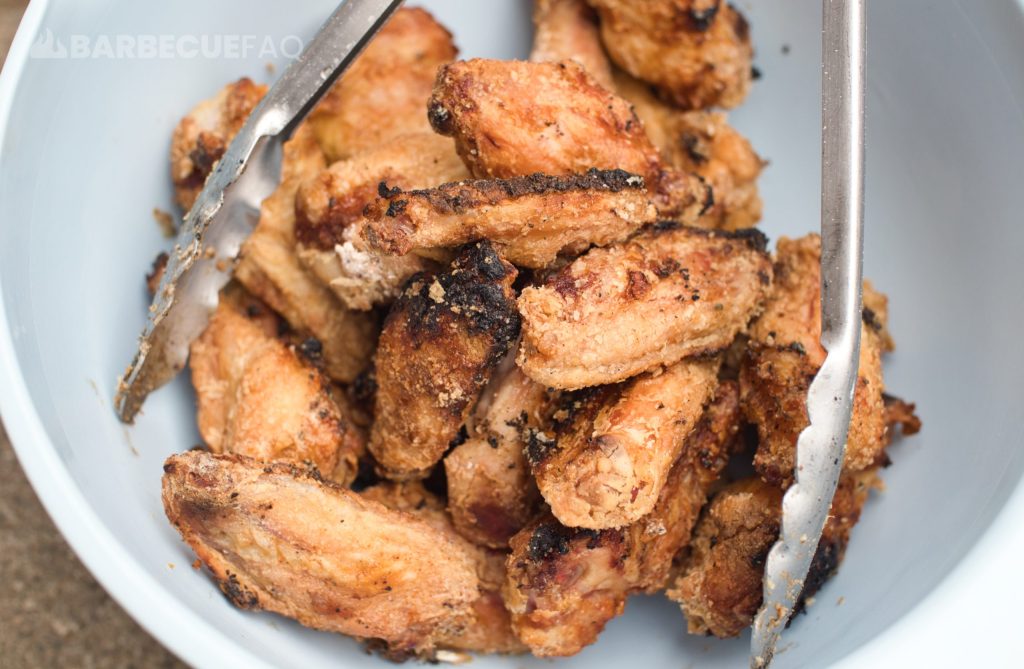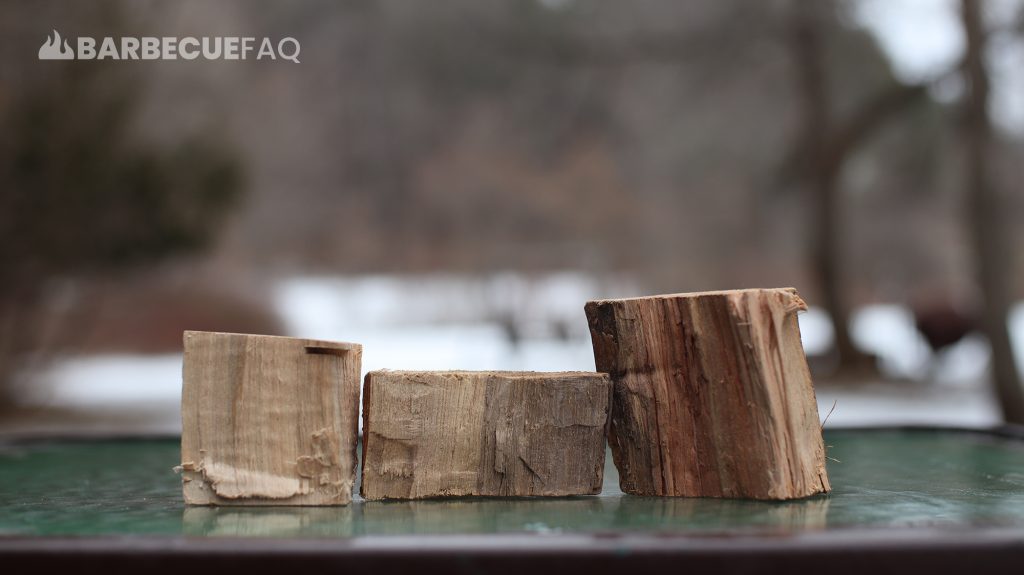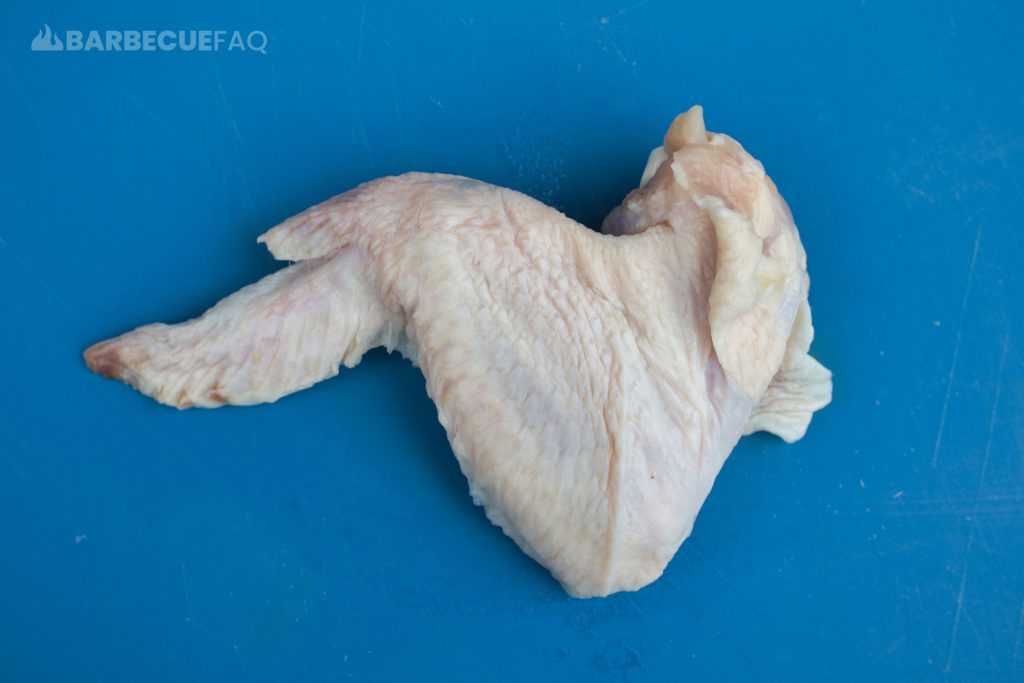Butter is made from the fat and protein components of churned cream. When it’s added to an acidic ingredient like hot sauce, it adds richness.
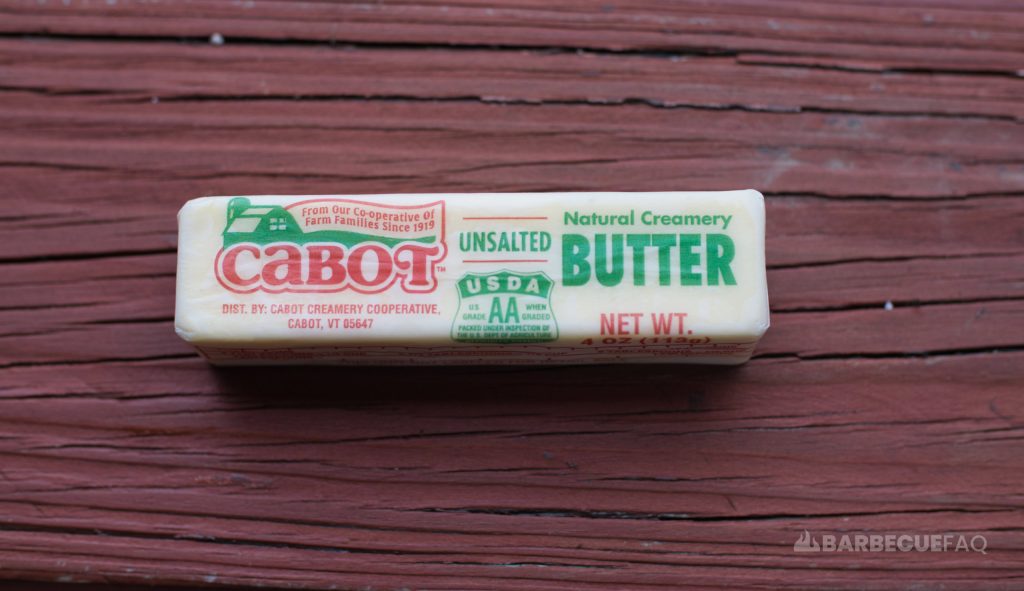
This richness helps to further round out the flavors of the hot sauce (which is acidic), which makes it more palatable.
Another added benefit of the butter is that it helps to thicken the hot sauce. Most hot sauces are rather thin – like Frank’s Red Hot – which are vinegar/water-based.
When incorporated correctly, the butter adds a velvet consistency. This consistency also means it will stick better to the Wings vs running off them as water and vinegar are thin.
This is also why most BBQ mop sauces use a fat like butter and why most marinades use a lot of oil.
How to Add Butter to Wing Sauce
1. Add 1/2 stick of butter to 1 cup of hot sauce.
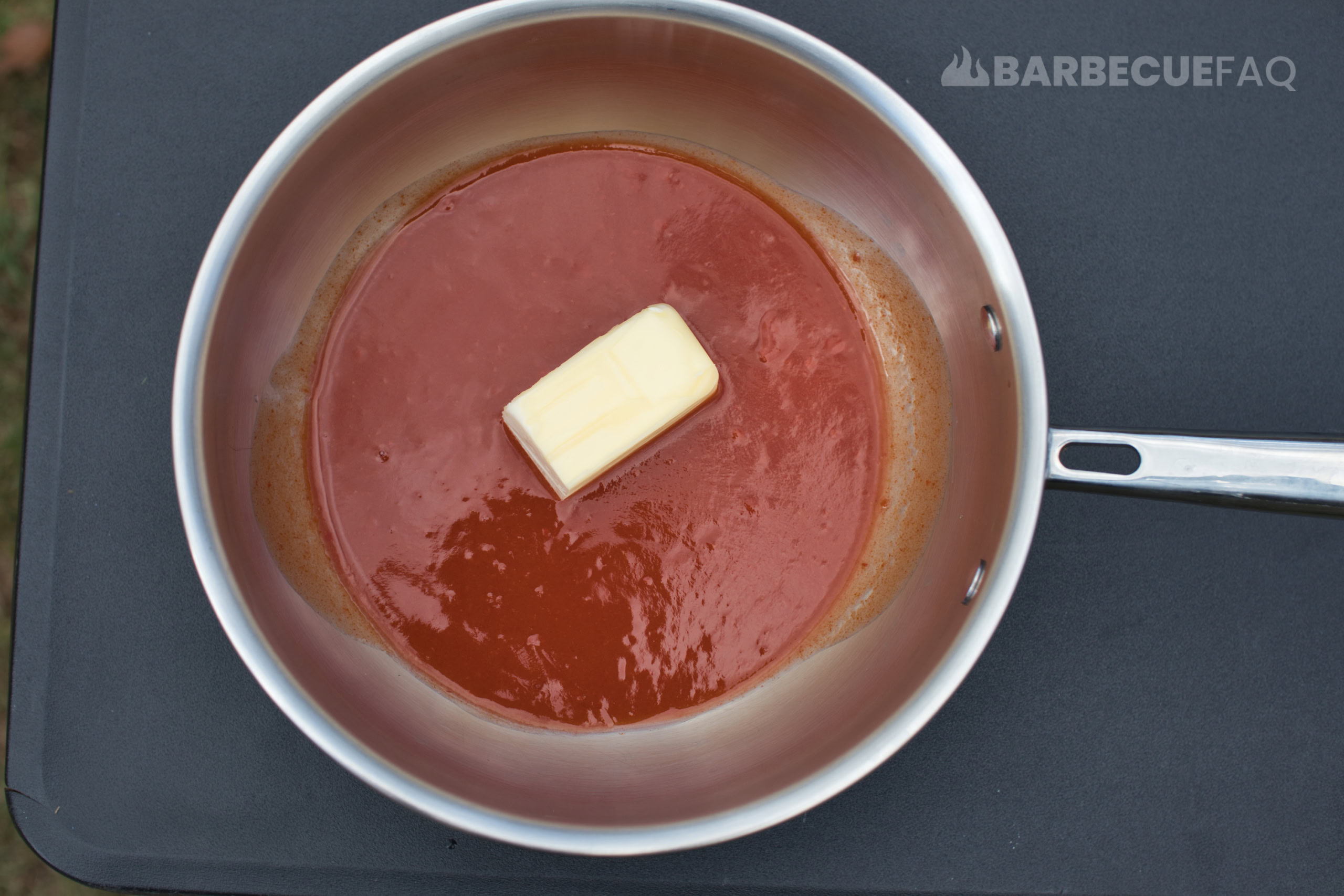
2. Turn your burner on to the lowest setting.
3. Slowly incorporate the butter with the hot sauce by whisking the butter occasionally.
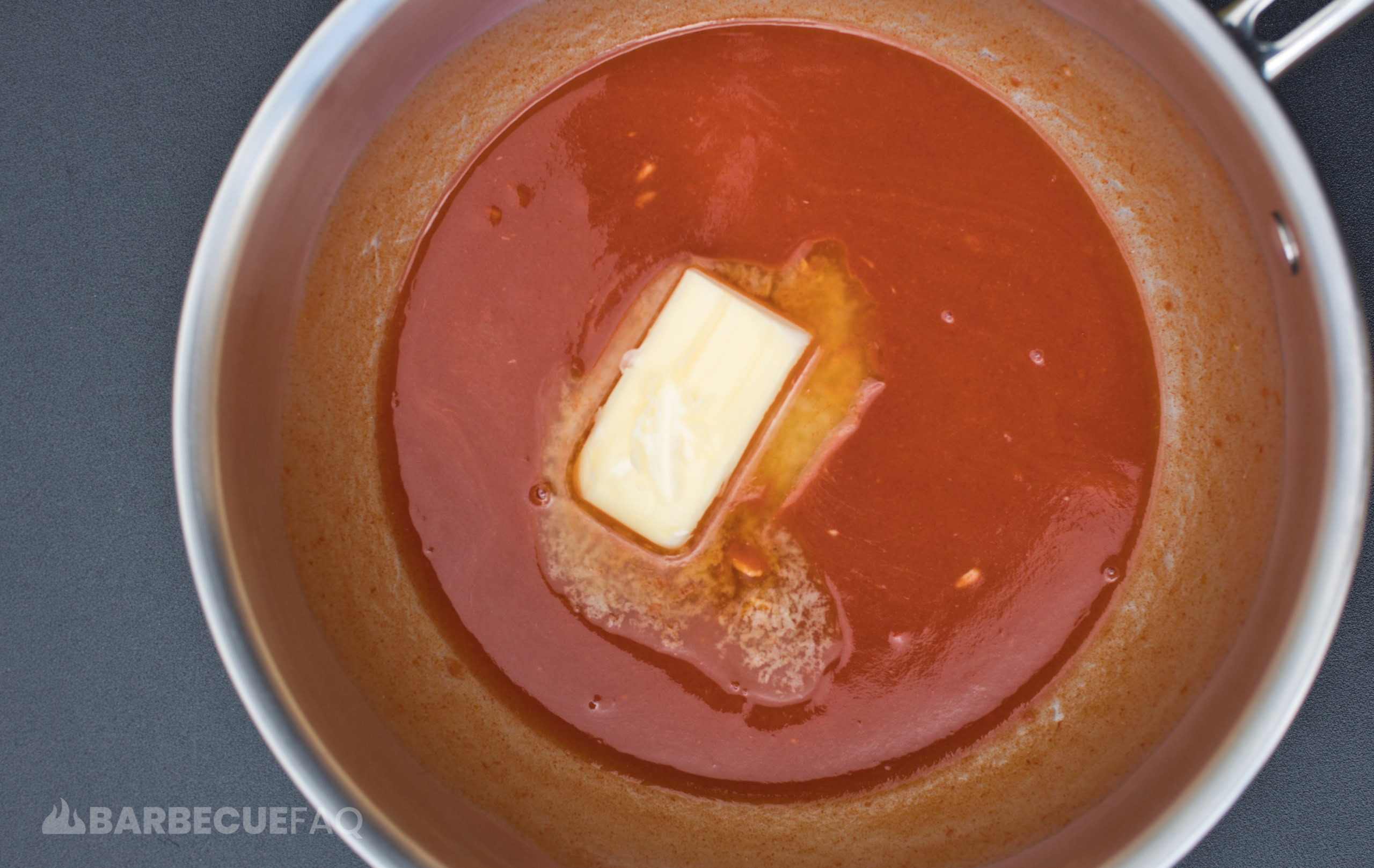
4. Eventually the butter will melt down and create a velvet like consistency.
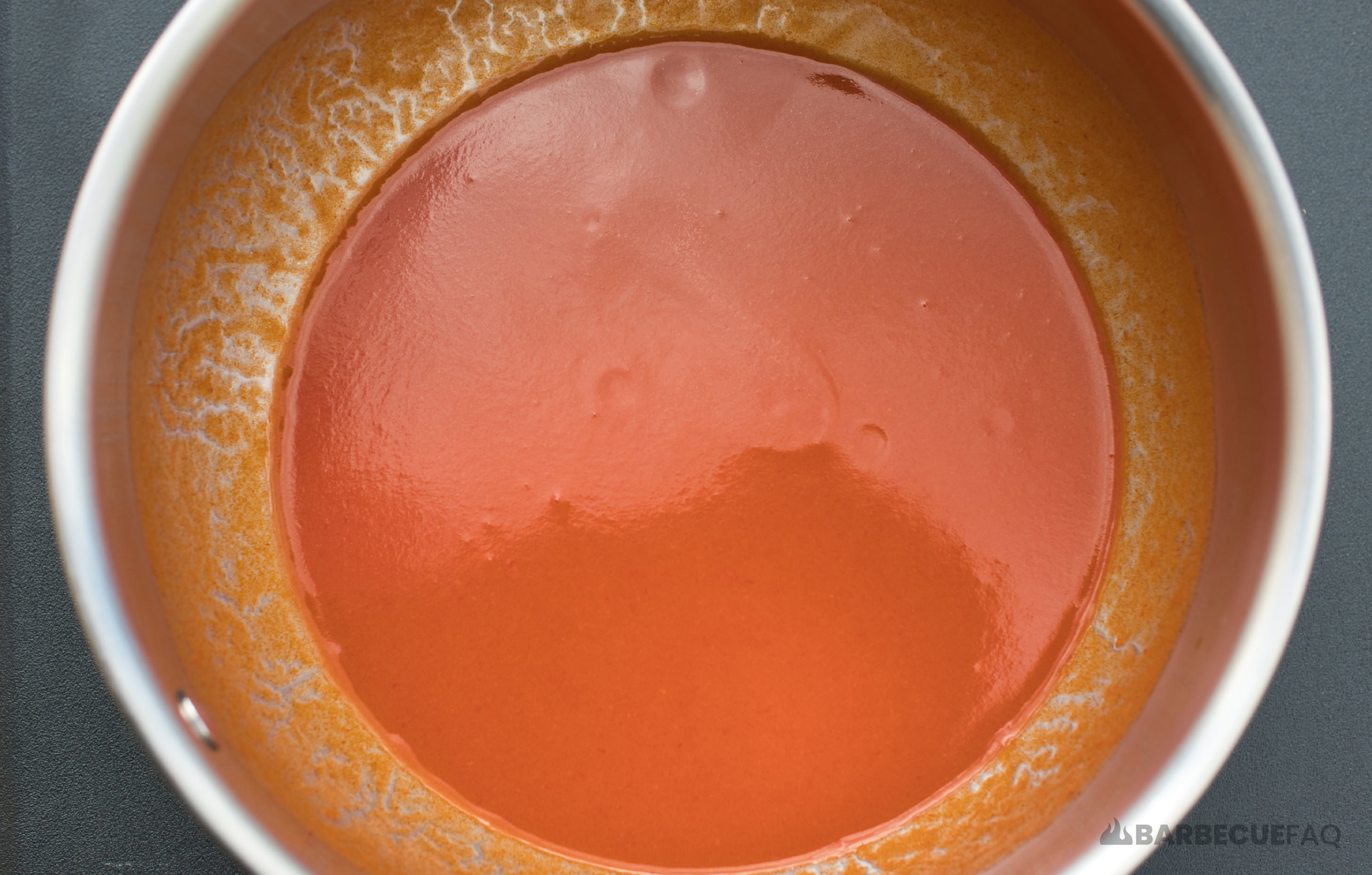
Once the butter has incorporated you can toss your wings in the sauce.
It now clings directly to the wings:
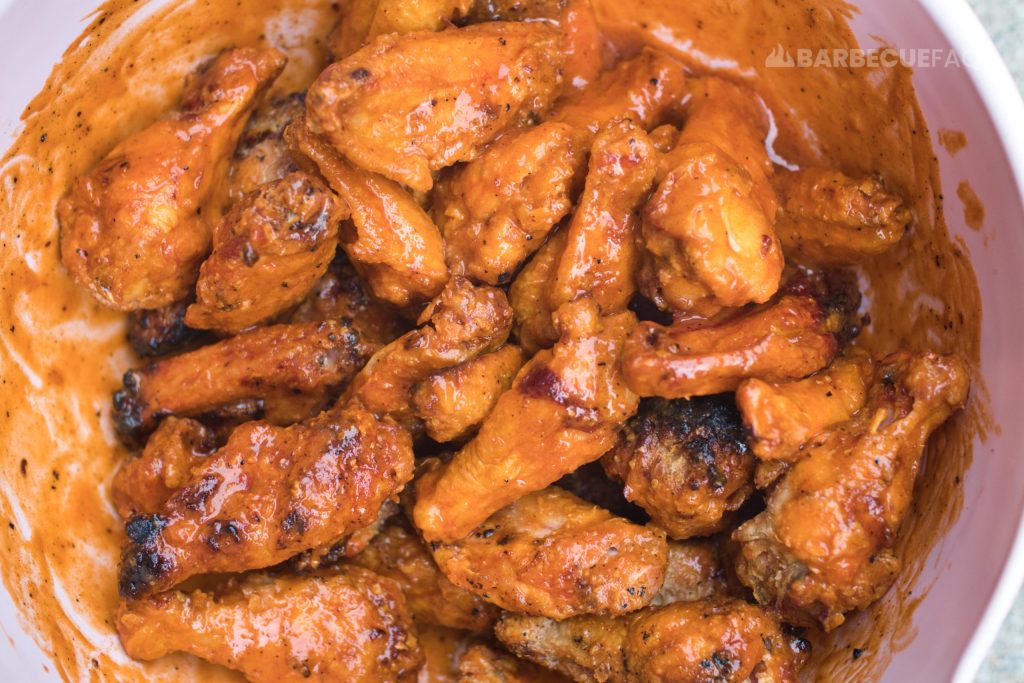
Be Super Mindful of Temperature When Adding Butter to Wing Sauces
To reiterate, butter is made from the fat and protein components of churned cream; It’s comprised of water, milk fat, and milk solids.
If you were to add the butter to a medium sauce pan with your hot sauce and your temperature is too high, you risk separating the milk solids. The result will be an unpleasant oily, thin sauce; The exact opposite of your goal.
Rather, add your hot sauce to a medium sauce pan at low heat.
Add half a stick of unsalted butter and slowly incorporate the butter with the hot sauce.
If You Don’t Want to Use Butter to Thicken the Sauce
A common way to thicken sauces is with a cornstarch slurry.
The usual recommendation is to start with:
- 1 Tablespoon of cornstarch
- 2 Tablespoons of water
You then whisk this together until there are no lumps.
You then bring your hot sauce to a simmer in a medium sauce pan and add your slurry. Whisk the slurry and the hot sauce until it visibly thickens.
Ensure you don’t cook longer than needed as you risk the starch breaking down and your sauce thinning.
Aside from this you could use a roux; I’m not a huge fan of the roux method, mainly because it almost ends up paste-like as apposed to our velvet texture.
You could also reduce the hot sauce by bringing it to a boil and then reducing to a simmer. Whisking and cooking until the sauce is reduced to your desired consistency.


